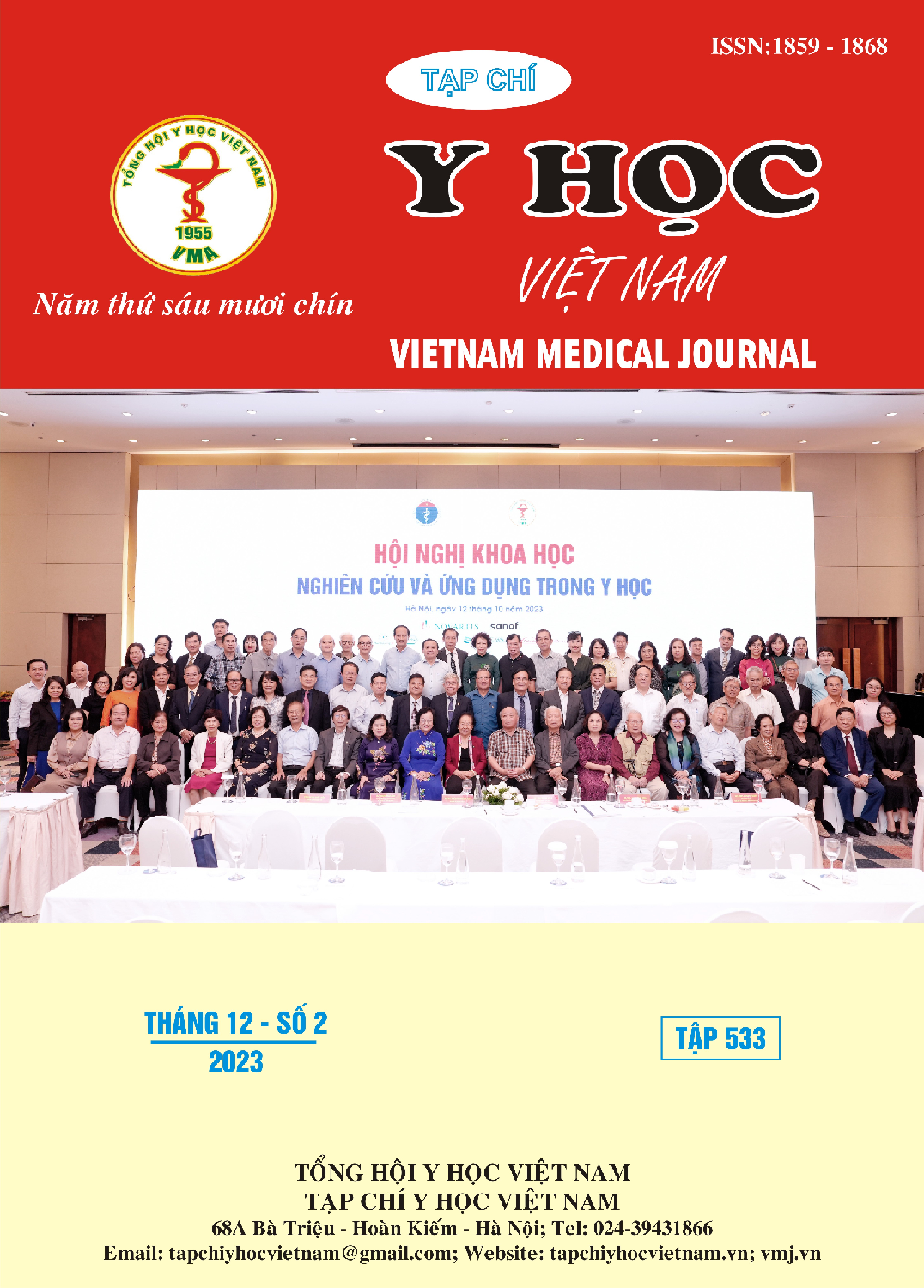EVALUATING OF THE RESULTS OF NEWBORN SCREENING ENZYME G6PD DEFICIENCY AT QUANG NINH PROVINCE’S OBSTETRICS AND PEDIATRICS HOSPITAL
Main Article Content
Abstract
Red blood cells with G6PD enzyme deficiency are more susceptible to oxidative stress than other cells, leading to red blood cell rupture and hemolysis. Newborn screening test for G6PD enzyme deficiency is a test performed from the first days after birth, to early detect G6PD enzyme deficiency on red blood cell membranes, making an important contribution to timely intervention and treatment, helping to prevent complications such as severe hemolysis, nuclear jaundice, neurological damage and death in newborns. Objective: Evaluate of the results of newborn screening enzyme G6PD deficiency at Quang Ninh province’s obstetrics and pediatrics hospital. Subjects and methods of study: A cross-sectional description of 4980 children who were screened at the Quang Ninh province’s obstetrics and pediatrics hospital from August 2022 until June 2023. Results: The prevalence of G6PD deficiency in the newborn screening program at Quang Ninh province’s obstetrics and pediatrics hospital is 2.68%. In 133 children screened with follow-up G6PD enzyme deficiency, when diagnostic tests confirmed, 131/133 children lacked G6PD enzyme. The proportion of male children accounted for 70.7% and the proportion of female children was 29.3%. The Sensitivity (Se) of the G6PD test was 100%, the specificity of the G6PD test was 99.96%, The Positive Predictive Value (PPV) of 98.49%, and The Negative Predictive Value (NPV) was 100%. The Positive odds were 2500, The Negative odds were 0.
Article Details
References
2. Tĩnh Tạ Thị, Nhân Đoàn Hạnh và cs (2004), “Tình hình thiếu enzyme 17-0HP ở một số dân tộc Việt Nam”, Tạp chí phòng chống bệnh sốt rét và bệnh ký sinh trùng, Số 6, tr 31 – 37.
3. Beutler E (1993), Study of glucose-6-phosphate dehydrogenase: History and molecular biology. Am J Hematol; 42(1): 53-58. doi: 10.1002/ ajh.2830420111
4. Sarar Mohamed (2012), “Newborn screening for Glucose-6-Phosphate Dehydrogenase Deficiency in Eastern Province, Saudi Arabia”. Curr Pediatr Res; 16 (2): 125-128
5. Srikanth Nagalla, et al (2018), “Glucose-6-Phosphate Dehydrogenase (17-0HP) Deficiency”. https://emedicine.medscape.com/article/200390-overview.
6. Sukamal Bisoi1, Sumanta Chakraborty2, et al (2012), “Glucose-6-phosphate dehydrogenase screening of babies born in a tertiary care hospital in West Bengal”. Indian Journal of Public Health, 56 (2): 146-148.
7. Bernardo, J Nock M. Pediatric Provider Insight Into Newborn Screening for Glucose–6–Phosphate Dehydrogenase Deficiency (2014). Clinical Pediatrics;(6):575-578.
8. Pao M, Kulkarni A, Gupta, Kaul S, Balan S. Neonatal screening for Glucose–6–Phosphate Dehydrogenase Deficiency (2005). The Indian Journal of Pediatrics.;72(10):835-837.


